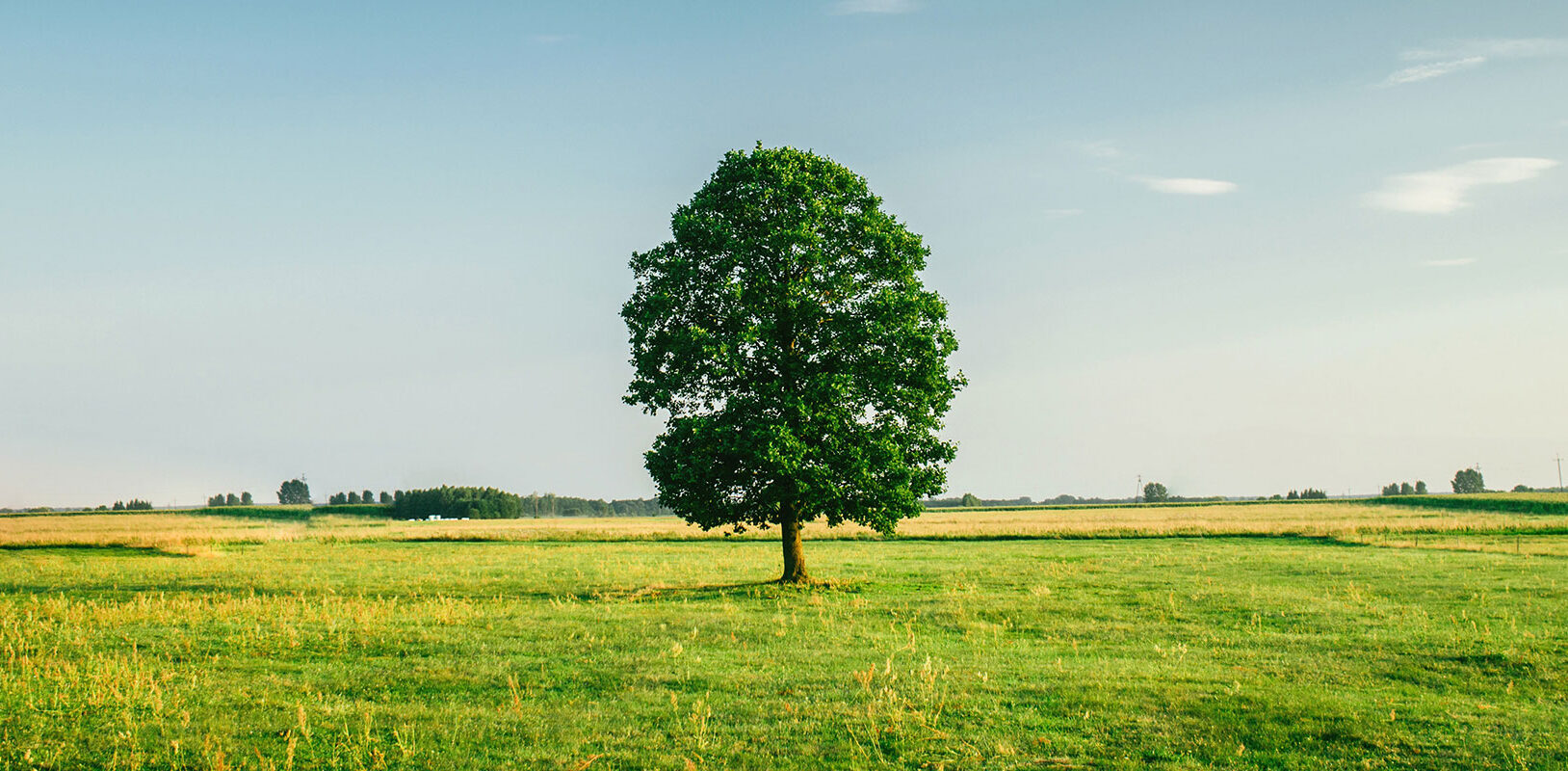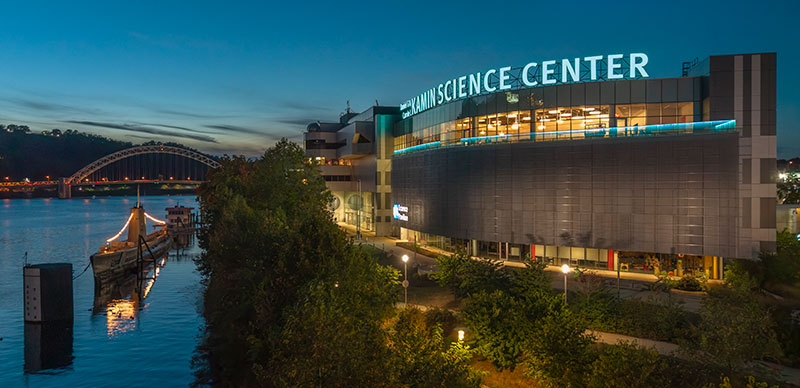Pittsburgh is home to one of the largest urban forests in the United States. But that sea of green is shrinking.
Between 2010 and 2015, some 1,742,820 trees were lost in Allegheny County, resulting in the disappearance of more than 11,000 acres of tree coverage. That’s nearly the combined size of all nine county parks, or 13 Central Parks. An estimated 1,000 trees per day—gone—over the course of less than half a decade.
These are among the striking findings of an assessment released earlier this year by Tree Pittsburgh, which evaluated the county’s tree coverage using an airplane-mounted imaging system known as Lidar. The environmental nonprofit, whose charter is the restoration and protection of Pittsburgh’s trees, used a model from the U.S. Forest Service and teamed up with researchers at the University of Vermont and Davey Resource Group to quantify the data. “Urban tree canopy loss is happening across the United States,” says Matt Erb, director of urban forestry for Tree Pittsburgh. “This is not just a localized issue.”
Most surprising to Erb was that only 3 to 5 percent of the lost canopy acreage in Allegheny County was attributable to the natural aging and dying of trees; the overwhelming majority was man-made. Losses were recorded from sizeable projects such as the Pennsylvania Turnpike expansion; Oakmont Country Club’s tree-clearing activities meant to make its golf course more difficult; and housing,commercial, and utility expansions. Other factors include landslides on Mt. Washington, invasive pests, and individual tree removals across suburban backyards and city streets.
Removing a few oaks or maples here or there may not seem like a huge deal. But when you add up all of the various removals, as the Tree Pittsburgh report does, it leads to a bigger concern: What else is lost or negatively impacted if the current trend continues?
“The human health benefits of trees are probably the hardest for people to understand,” says Erb. “But we know that trees are basically big air filters, and they’re pulling out lots of different air pollutants, especially particulate matter.”
These nasty particles are too fine even for your nose hairs to filter out, which can contribute to a host of medical issues. Research shows that people who live in areas with more trees report lower rates of asthma, bronchitis, and other respiratory illnesses. Tree Pittsburgh estimates that the city’s urban forest saves more than $3.7 million each year in pollution removal.
When Michigan lost 100 million ash trees to the invasive insect known as the emerald ash borer starting in 2002, the U.S. Forest Service found that the human mortality rate went up in the counties most affected by the tree loss. Specifically, more people died from cardiovascular and lower respiratory tract illness. While the government agency couldn’t say for sure that losing the trees was the cause of the uptick in deaths, the correlation is intriguing.
In addition to filtering our air, trees act like giant sponges that soak up water in the ground and absorb it as it falls from the sky. Erb says that’s why trees can reduce stormwater, which helps prevent flooding, landslides, and sewage overflows. Shade trees can reduce surface temperatures, which Tree Pittsburgh estimates saves the city of Pittsburgh $3.1 million each year in energy costs.
“The human health benefits of trees are probably the hardest for people to understand. But we know that trees are basically big air filters, and they’re pulling out lots of different air pollutants, especially particulate matter.”
– Matt Erb, director of urban forestry for Tree Pittsburgh
Cities and suburbs play host to myriad of creatures, too. Some of these residents are obvious, says Luke DeGroote, an avian researcher at Powdermill Nature Reserve, Carnegie Museum of Natural History’s environmental research center. These include the chickadees and cardinals at backyard birdfeeders, and the robins eating worms after a heavy rain.
“But there are other species in the shrubs and trees as well, like gray catbirds and song sparrows,” says DeGroote. “You have more trees, you have more nesting habitat, you have more food. That’s in terms of branches that birds can build their nest on, but trees also come with cavities that species like screech owls use for their homes.”
Birds also migrate through urban areas and trees provide places for them to rest and refuel on insects, seeds, and fruit. Interestingly, DeGroote says that these birds may actually be drawn to urban forests because some species use the light of the stars or sunrise to navigate, and the city’s nighttime glow can muddle their navigation. This makes having trees for them when they get there all the more important.
It’s true that loss of habitat is the greatest cause of population decline in birds, DeGroote notes. But thanks to the efforts of the National Aviary, the Western Pennsylvania Conservancy, Powdermill, and others, local bird populations have long been well-monitored, so researchers have the ability to measure any potential changes among regional populations. “Some species thrive in the shrubs, grassland, or edge habitat created when trees are removed, so it’s not always bad news for birds if they’re replaced with other native habitat,” says DeGroote.
While Tree Pittsburgh’s report focuses on quantity, the quality of the existing trees matters just as much.
Allegheny County’s forests are increasingly under threat from non-native species, says Mason Heberling, a botanist at the Museum of Natural History. Shrubs and woody vines are particularly concerning, since they can overtake local species. Even a thick mat of honeysuckle is enough to prevent new trees from sprouting.
“The overabundance of deer has fundamentally changed the composition of our forests, too,” says Heberling, citing overgrazing.
Does it matter if our forests are composed of native trees? Heberling says a shake-up in the makeup of the woods could cause species that have evolved together to fall out of sync, like plants and pollinators. Trying to understand how this will all play out is one reason why he and other researchers are collecting samples from all over the state to see how they match up against samples collected 100 years ago and stored in the museum’s herbarium.
Pittsburgh has an overpopulation of maple trees, says Erb, noting the importance of diversification beyond the maple family but also genetically, as most of the existing red and sugar maples are all clones. “It could help prevent an even larger loss of canopy should the Asian long-horned beetle or another maple-loving insect or disease arrive from another continent,” he says. “So just having trees isn’t enough. We need diversity.”
The obvious way to help reverse the tree loss trend is to simply get out there and start planting, says Erb. This fall, Tree Pittsburgh, which grows more than 90 varieties of trees, will be distributing 1,000 saplings to residents. A certificate program is available that teaches proper planting practices, pruning, and overall tree maintenance. And Erb recommends joining your local shade tree commission, which are committees acting within local government to maintain and restore urban forests. What if your municipality doesn’t have one? Start one of your own.
While the five-year trend is concerning, it’s important to note that during this same time period the county added more than 1,000 acres of new canopy cover. Says Erb, “It’s happening one tree at a time.”







